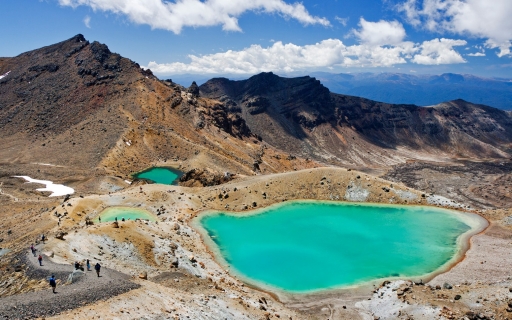Kuratau Weather and Climate: A Comprehensive Guide
The climate in Kuratau is marked by big temperature swings throughout the year.
Temperatures range from pleasant during the warmest months
to cold in the cooler months.
It also has a relatively rainy climate with high levels of precipitation.
Now, let’s break down all the climate details for a clearer picture.
Average maximum day and minimum night temperature
In Kuratau, temperatures differ significantly between summer and winter months. On average, daytime temperatures range from a pleasant 22°C in February to a chilly 11°C in July.
Nighttime temperatures can drop, with average lows reaching 4°C in July.Check out our detailed temperature page for more information.
Temperature ranges by month
Precipitation and rainy days
Kuratau experiences significant rainfall throughout the year, averaging 1727 mm of precipitation annually. The wettest period in Kuratau occurs in September, which receives around 169 mm of precipitation. During the driest month, March, Kuratau experiences high rainfall, totaling approximately 109 mm. The consistent precipitation levels throughout the year contribute to a relatively stable climate.
The mean monthly precipitation over the year, including rain, hail and snow
Sunshine over the year
In Kuratau, summer days are longer and more sunny, with daily sunshine hours peaking at 7.5 hours in January. As the darker season arrives, the brightness of the sun becomes less. June sees a soft sun for only 3.2 hours per average day.
Visit our detailed sunshine hours page for more information.
Monthly hours of sunshine
Daily hours of sunshine
Forecast for Kuratau



Select a Month of Interest
Check the conditions for any month of the year.
The best time of year to visit Kuratau in New Zealand
During the months of January and February you are most likely to experience good weather with pleasant average temperatures that fall between 20°C and 26°C.Other facts from our historical weather data:
Most rainfall (rainy season) is seen in June, July, August, September, October and December.
February has an average maximum temperature of 22°C and is the warmest month of the year.
The coldest month is July with an average maximum temperature of 11°C.
September tops the wettest month list with 169 mm of rainfall.
March is the driest month with 109 mm of precipitation.
January is the sunniest month with an average of 225 hours of sunshine.
No idea where to travel to this year? We have a tool that recommends destinations based on your ideal conditions. Find out where to go with our weather planner.



